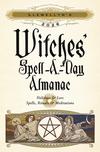Feast of St. Ambrose Spell
Color of the day: Gold Incense of the day: Parsley Today is the feast day of St. Ambrose. He was the bishop of Milan in the fifth century, and because of his scholarship and writing, he is called one of the four "Doctors of the Church." Much of Ambrose's work was concerned with synthesizing classical Pagan philosophy, particularly the work of Plato, with Christianity. He was particularly involved with the mystical teachings of the classical age known as Neo-platonism. The city of Milan is the most likely birthplace of the tarot, and although Ambrose lived a thousand years before that birth, he made an important contribution to tarot symbolism. St. Ambrose was the first person to refer to the four virtues that had been expounded on by Plato and Aristotle, which he called the Cardinal Virtues-temperance, justice, fortitude, and prudence. The word "cardinal" is derived from the Latin root cardo, which refers to the axis of a wheel. "Cardinal" means that which turns the wheel, referring to the four directions and the four constellations of the seasonal changes. St. Ambrose used the term "cardinal" for the virtues to indicate that they were more powerful than time and space. The goddess Fortuna was the ruler of this wheel, and she and her wheel have been assigned a place in the center of the tarot trumps. In fact, wisdom is illustrated on the Marseilles' tarot Fortune card. Here we see the wheel of fate or time with three foolish creatures around it. They represent the three follies that cause the three aspects of suffering that are depicted in the second section of the tarot trumps. The three other cardinal virtues can also be seen in this second section of the tarot trumps. They are numbered in the opposite order from the way they were presented by Pythagoras and Plato. The virtues of the tarot are moving against time and suffering just as St. Ambrose taught. |
